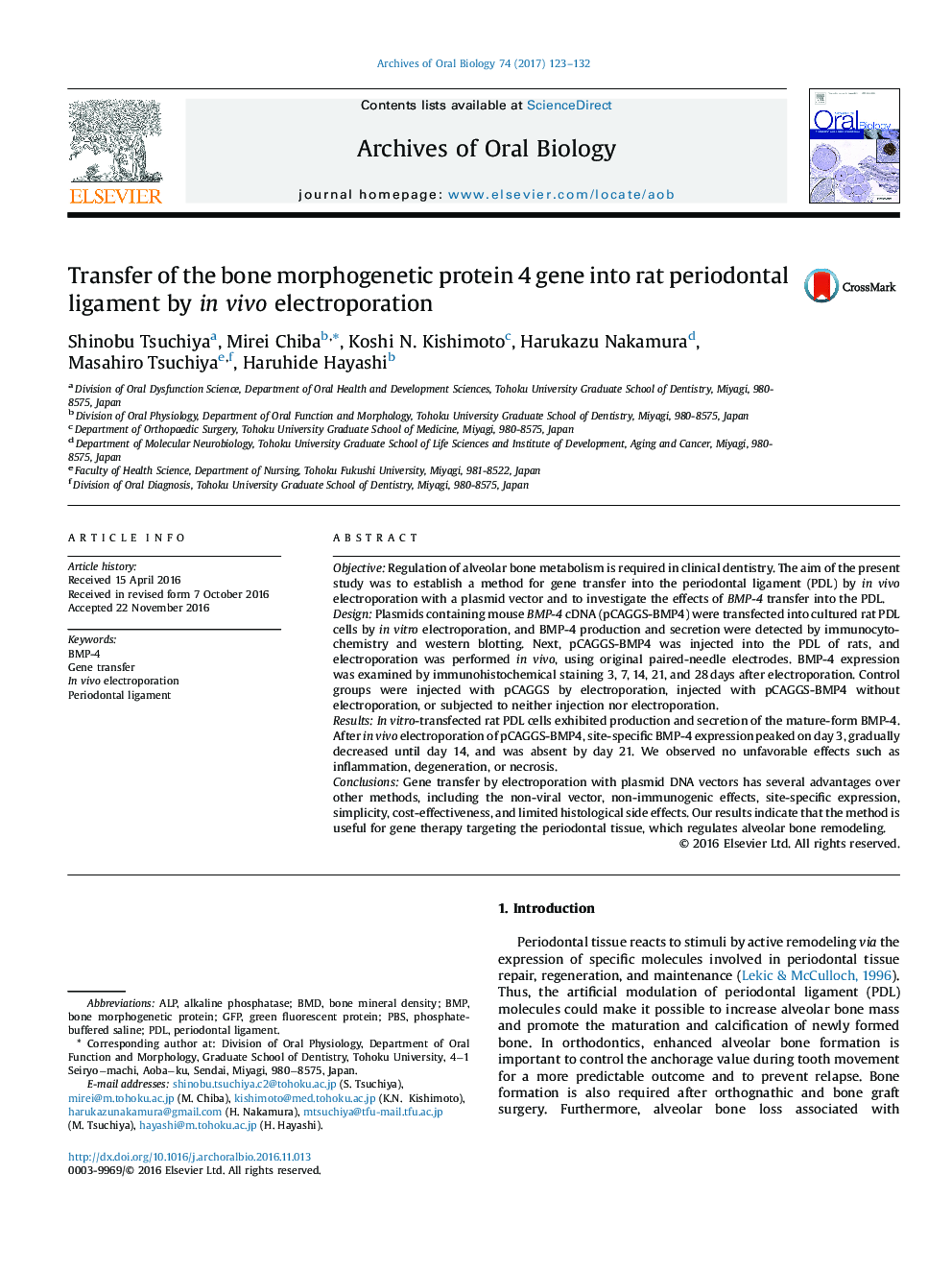| کد مقاله | کد نشریه | سال انتشار | مقاله انگلیسی | نسخه تمام متن |
|---|---|---|---|---|
| 5638128 | 1583279 | 2017 | 10 صفحه PDF | دانلود رایگان |

- We established gene transfer into the PDL by electroporation with a plasmid vector.
- BMP-4 was expressed in PDL cells electroporated with pCAGGS-BMP4 in vitro.
- BMP-4 was expressed in the rat PDL electroporated with pCAGGS-BMP4 in vivo.
- The BMP-4 expression level decreased over time and disappeared by day 21.
ObjectiveRegulation of alveolar bone metabolism is required in clinical dentistry. The aim of the present study was to establish a method for gene transfer into the periodontal ligament (PDL) by in vivo electroporation with a plasmid vector and to investigate the effects of BMP-4 transfer into the PDL.DesignPlasmids containing mouse BMP-4 cDNA (pCAGGS-BMP4) were transfected into cultured rat PDL cells by in vitro electroporation, and BMP-4 production and secretion were detected by immunocytochemistry and western blotting. Next, pCAGGS-BMP4 was injected into the PDL of rats, and electroporation was performed in vivo, using original paired-needle electrodes. BMP-4 expression was examined by immunohistochemical staining 3, 7, 14, 21, and 28Â days after electroporation. Control groups were injected with pCAGGS by electroporation, injected with pCAGGS-BMP4 without electroporation, or subjected to neither injection nor electroporation.ResultsIn vitro-transfected rat PDL cells exhibited production and secretion of the mature-form BMP-4. After in vivo electroporation of pCAGGS-BMP4, site-specific BMP-4 expression peaked on day 3, gradually decreased until day 14, and was absent by day 21. We observed no unfavorable effects such as inflammation, degeneration, or necrosis.ConclusionsGene transfer by electroporation with plasmid DNA vectors has several advantages over other methods, including the non-viral vector, non-immunogenic effects, site-specific expression, simplicity, cost-effectiveness, and limited histological side effects. Our results indicate that the method is useful for gene therapy targeting the periodontal tissue, which regulates alveolar bone remodeling.
Journal: Archives of Oral Biology - Volume 74, February 2017, Pages 123-132